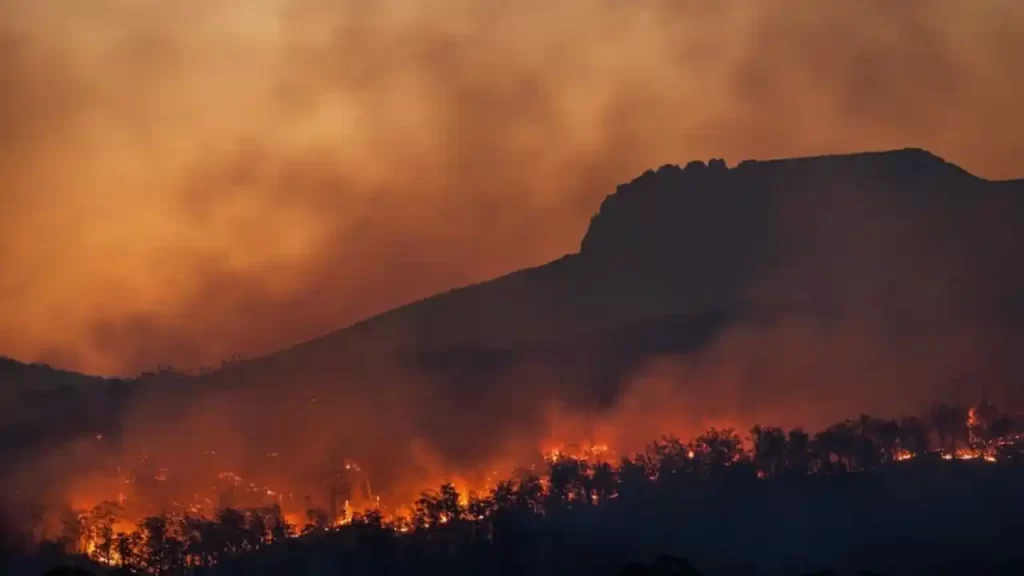Since the pre-industrial levels, anthropogenic climate change has caused an increase of 1.1 degrees Celsius. The trajectory is still upwards, emitting more greenhouse gases than ever. What will happen when the temperature continues to rise and reach four degrees of warming? This blog post will describe the consequences of four degrees of warming. So, let me take you fast forward into the future.
What is Global Warming and Why is it Happening?
Global warming is one of the aspects of climate change. When defined it is the condition of rising global temperatures predominantly due to anthropogenic causes.
Greenhouse gases such as water vapor, carbon dioxide, methane, and so on act as a blanket around the globe. These gases trap the outgoing radiation thus increasing the average temperatures of the globe.
When Will the Average Global Temperature Reach Four Degrees Celsius?
Different climate models have predicted different times for the world’s average temperatures to reach 4 °C.
For example, in numerical experiments from 39 CMIP5 climate models, associated with RCP8.5 greenhouse gas concentration, Xiaoxin Wang et. al (2018) have projected that the median year for the global temperature to reach 4 °C is 2084.
Other analysis, such as the UK Met Office, claims that the global average temperatures will reach four degrees of warming by as early as the 2060s.
However, the majority of climate scientists agree that the global mean temperature will reach 4 degrees of warming by the end of this century. While the exact time is not important, what is more, important is the action that we take to avoid it.
Describe the Consequences of Four Degrees of Warming
Let me take you a bit astray from the main topic.
Have you studied Hooke’s law, which states that within an elastic limit, the deformation of an object is directly proportional to the deforming force?
And what happens when the object is deformed beyond the limit?
Well, it breaks or deforms permanently.
Now, can you apply Hooke’s law to climate change (the deforming force) and Earth (the body)- [Note: I am referring to the law allegorically not categorically].
Earth has an enduring capacity/sustainability but beyond which it cannot recover and endure the change.
The world is barreling down a path to a global average temperature of 4 degrees of warming compared to pre-industrial levels, which will be catastrophic in many ways.
It will be very hard to precisely describe the consequences of four degrees of warming.
However, there is consensus on some major consequences. Let me describe the consequences of four degrees of warming.
1. Melting of Glaciers
One of the major consequences of global warming is the melting of glaciers.
We have already lost several meters’ thickness of polar ice. The situation will be much worse when the average temperature reaches four degrees.
The melting of glaciers has effects on a macro level. You might be surprised to know that the melting of glaciers and the over-consumption of groundwater can cause the Earth’s axis to shift.
2. Sea Level Rise and Inundation of Coastal Areas
In the last 100 years alone, average sea levels have risen by 8 inches.
According to estimates, at the end of this century, sea levels are expected to rise by 1 to 4 feet. Coastal areas such as Madagascar, Mexico, Indonesia, Bangladesh, Maldives, and Venezuela, are at the risk of being inundated.
3. Droughts and Heatwaves
At four degrees of warming, heatwaves and droughts will be widespread across many regions. The worst heatwave situation is expected to occur in the tropics.
Droughts are the aftereffects of heat waves and water scarcity.
Droughts will affect many areas once four degrees of warming are achieved. Areas such as Southern Europe, Northern Africa, Australia, and South Africa are more prone to droughts.
Most alarming predictions anticipate that a warming of four degrees will make Africa a desert continent.
Along with Africa, China is also expected to become an entirely uninhabitable desert, so the impact will trigger large migrations of billions of people to other areas.
4. Shrinking Food Security
Climate change is already affecting global food security through a series of harsh weather conditions such as droughts, intense rainfalls, hurricanes, heat waves, etc.
All these changes are happening at only a 1.1 degree Celsius increase. Imagine the level of destruction when the average global temperature reaches 4 degrees Celsius. The shrinking food security will lead to higher malnutrition rates.
The current trajectory shows that between 5 and 170 million additional people will suffer from hunger by 2080.
5. Irreversible Loss of Biodiversity
Another impact of global warming of four degrees Celsius will be the irreversible loss of biodiversity.
The change will lead to the extinction of thousands of species including coral reef systems.
6. Water Scarcity
Most impacts on water availability are likely to occur in association with rising water demand as the world population surges.
Four degrees of warming will make many regions fully water-scarce including the Near and the Middle East, South Asia, South America, Southern Australia, and Eastern Africa to name a few.
7. New Hubs of Civilization
Global warming of four degrees will make several countries uninhabitable.
Extreme weather conditions will force billions of people to be displaced.
The world’s habitable strip is expected to shift northwards. Areas such as Canada, Russia, Greenland, and the Nordic countries will be more inhabitable and will become superpowers in the 22nd century.
If you want to know more about the consequences, you can watch this interesting video from RealLifeLore.
Ways in Which These Consequences Can be Prevented
To prevent the consequences mentioned above, most climate scientists around the world believe that we should restrict global warming to 2 degrees Celsius if not 1.5 degrees Celsius as agreed in many climate change summits.
The time demands more aggressive action.
There are many ways in which we can make sure that the global average temperatures are kept under 1.5 degrees, both at the governmental level and at the individual level.
Here is a list of some of the main ways in which the climate catastrophe can be reverted:
- Carbon pricing
- Ending fossil fuel subsidies
- Invest in green energy
- Reducing deforestation:
- Conserving water and power
- Adapting eco-friendly diet
- Purchasing biodegradable and eco-friendly products
You May Also Read: 7 Sustainable & Biodegradable Liquid HandSoaps You NEED in Your Bathroom
Conclusion
Imagining the visuals of the destruction is of course very disturbing. Therefore, we need urgent actions against climate change. It is our moral obligation to play our role in saving the world from the greatest catastrophe.
You May Also Read: Your Ultimate Guide to the Best Biodegradable Gloves: Top 9 Picks

